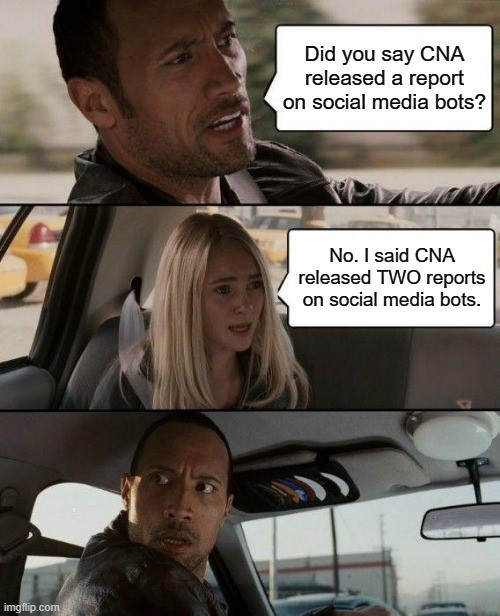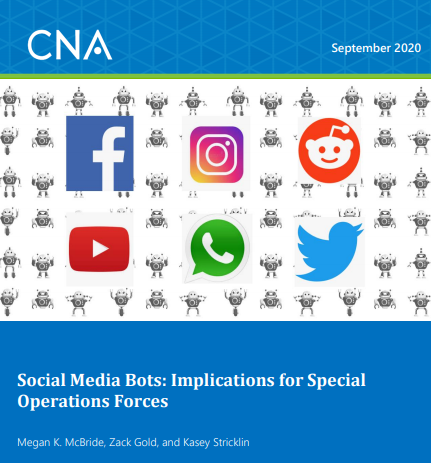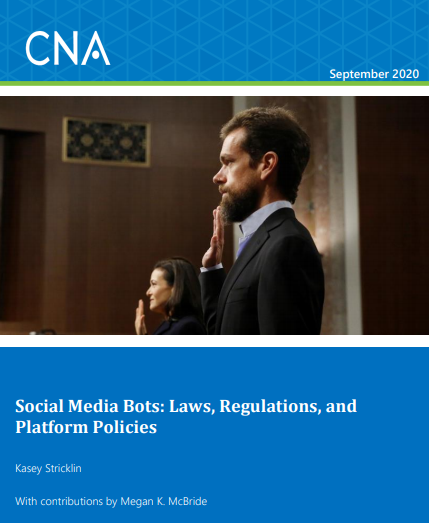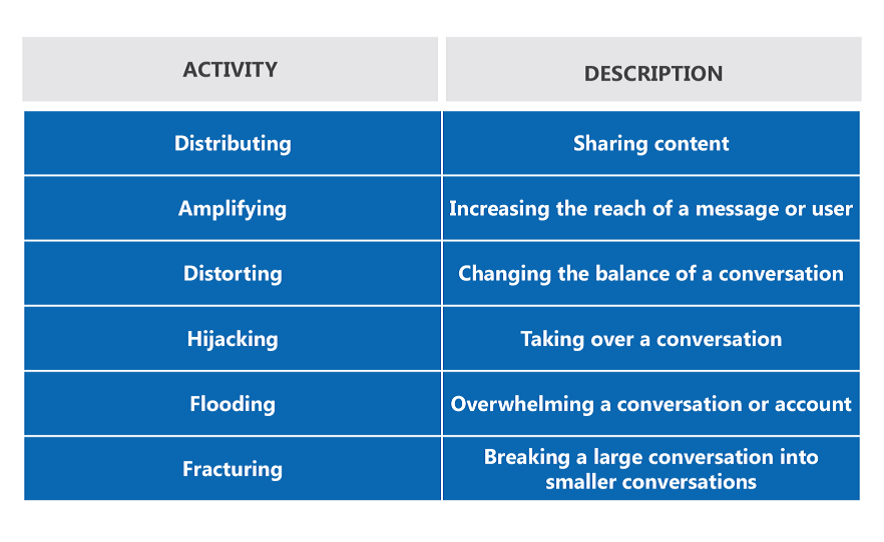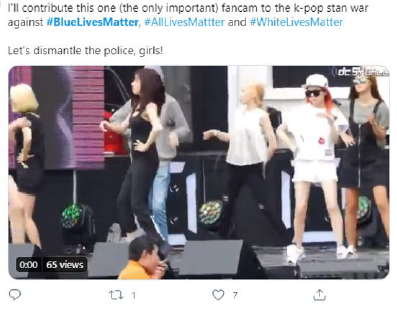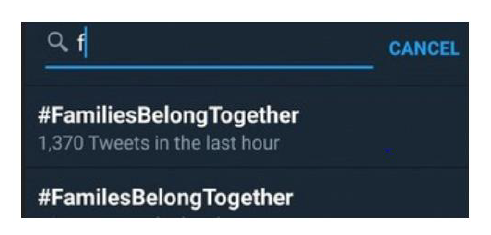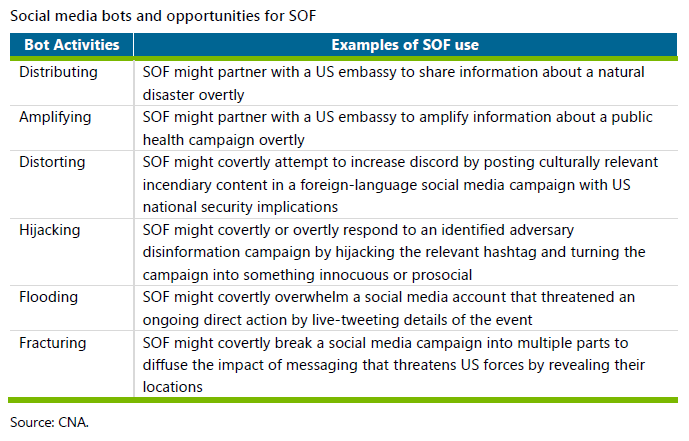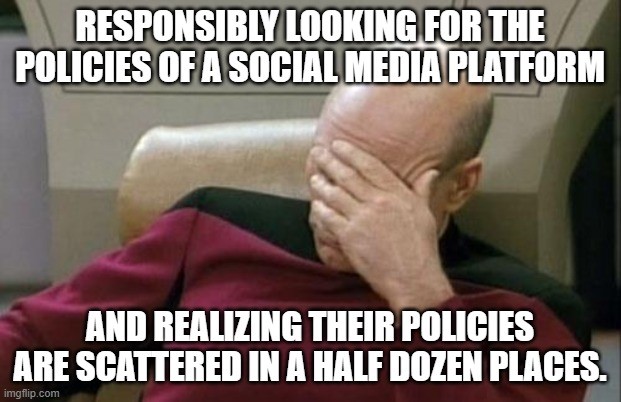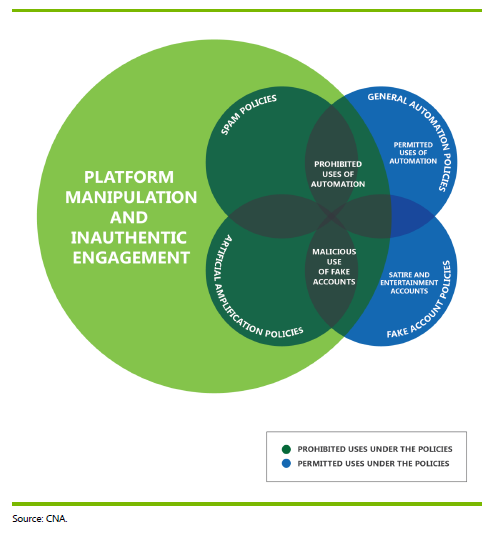This week, @CNA_org released 2 reports on social media bots: automated programs that operate on social media platforms and interact with humans. Sometimes these bots self-identify as bots ( @mothgenerator is one of our favorites), & sometimes these bots pretend to be humans. 1/20
The first report is “Social Media Bots: Implications for Special Operations Forces” ( https://www.cna.org/CNA_files/PDF/DRM-2020-U-028199-Final.pdf)">https://www.cna.org/CNA_files... and the second report is “Social Media Bots: Laws, Regulations, and Platform Policies” ( https://www.cna.org/CNA_files/PDF/DIM-2020-U-028193-Final.pdf).">https://www.cna.org/CNA_files... Summary of key points to follow in thread. 2/20
In writing, we found ourselves grappling with a lot of new terms, so we also made a bot slang glossary in case you have questions about botnets, astroturfing, sockpuppets, or twitter bombs. 3/20
We wrote these reports for @DeptofDefense actors most likely to be involved w social media bots. Based on their information capabilities and authorities to operate in the info space, @USSOCOM is a clear primary audience, but the implications extend to all #natsec entities. 4/20
Our goal was to focus on the different ways bots can be used to influence online conversations so as to frame bots as a tool that the US might use. Our report is different from others that focus on #disinformation, malicious actors, offline behavior, or technical solutions. 5/20
In “Social Media Bots: Implications for Special Operations Forces,” we identify six distinct objectives that bots can be deployed to achieve: distributing, amplifying, distorting, hijacking, flooding, and fracturing. 6/20
A bot engaged in distributing content does precisely that: it distributes content. @mothgenerator (mentioned above) is a good example. 7/20 https://twitter.com/mothgenerator/status/1310971293769101318">https://twitter.com/mothgener...
Amplification can be innocuous. We might attempt to share news about @CNA_org’s @AIwithAI podcast, on which we recently chatted about this report, by using the #InternationalPodcastDay hashtag. https://www.cna.org/news/AI-Podcast ">https://www.cna.org/news/AI-P... 8/20
When a botnet amplifies, though, the goal is to artificially create the impression of popularity and reach by generating a high number of posts and causing the topic to trend. 9/20
In 2020, K-Pop fans (fans of Korean pop music) flooded a hashtag (whitelivesmatter) with pictures and videos of K-Pop stars. They did this without automation, but it could have been done by a botnet. 10/20
A botnet fracturing a conversation use a misspelled hashtag to break a single conversation into multiple convos. This can happen accidentally: last year @usairforce tweeted the misspelled hashtag #independanceday (instead of #independenceday). 11/20 https://twitter.com/usairforce/status/1014493594793758720?s=20">https://twitter.com/usairforc...
Sometimes, though, it’s intentional. And if successful, the misspelled hashtag will become popular enough for Twitter to recommend it. 12/20
As we note, sometimes the activities are malicious (e.g., amplifying #COVID19 disinformation), sometimes neutral (e.g., sharing weather reports), and sometimes prosocial (e.g., flooding a hashtag filled with hate speech in order to drown it out). 13/20
By focusing on the immediate impact of the social media bots, we highlight what makes them such a powerful tool for @USSOCOM and others: bots don’t require cultural expertise, they can be deployed quickly, and they’re impressively versatile. 14/20
In fact, we think that social media bots are underappreciated in this space. Here are some opportunities for special operations forces (SOF): 15/20
Again, @CNA_org& #39;s “Social Media Bots: Implications for Special Operations Forces” can be found here: https://www.cna.org/CNA_files/PDF/DRM-2020-U-028199-Final.pdf">https://www.cna.org/CNA_files... 16/20
In “Social Media Bots: Laws, Regulations, and Platform Policies” ( https://www.cna.org/CNA_files/PDF/DIM-2020-U-028193-Final.pdf),">https://www.cna.org/CNA_files... @kasey_stricklin attempts to aggregate laws, regulations, and platform policies that are relevant to social media bots. This was a more complicated task than we’d imagined. 17/20
There are currently few US laws on bots, though there is some political will to pass relevant legislation. States have led the way so far. Our report discusses these efforts and the challenges the government faces in making and passing bot laws. 18/20
Most platforms don’t have clear or explicit policies on bots themselves, but they address bots through a number of other policies. Our report highlights all the relevant policies we could find, and explains how they relate to social media bots.19/20
No question that the space is evolving rapidly. AI/ML innovations, activity in developing countries, democratization of tech, & ^regulatory efforts will all impact the landscape. Bots, though, could be a powerful tool for actors like @USSOCOM if deployed responsibly. 20/20

 Read on Twitter
Read on Twitter